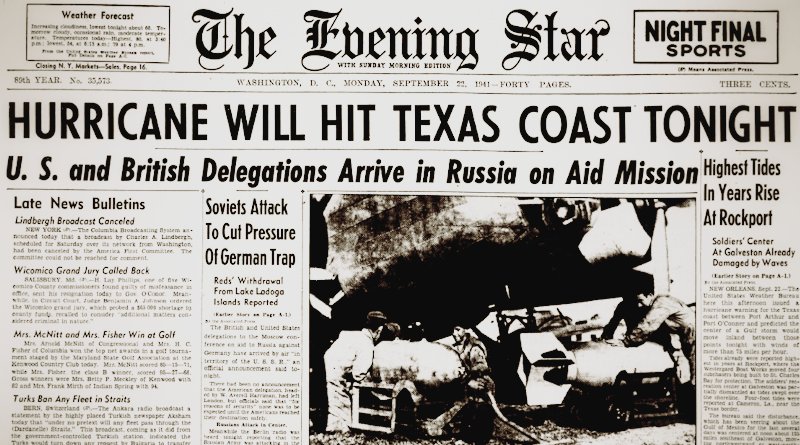World War II Chronicle: September 22, 1941
Click here for TODAY’S NEWSPAPER
St. Louis Cardinal rookie Stan Musial, playing just his fifth major league game, threw out a runner at the plate, stole a base, hit two doubles, and scored the winning run on an infield single with two outs in the bottom of the ninth. Musial collected six hits between the two doubleheader games and is the subject of some lofty praise on page 14.
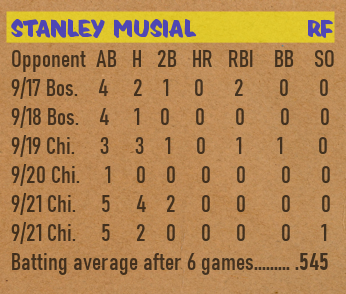
As the pennant race tightens up, the Cardinals have the tougher schedule than the first-place Dodgers, playing four games in Pittsburgh against the fourth-place Pirates and two more in Chicago against the sixth-place Cubs. Meanwhile the Dodgers — now just one game in front of St. Louis — play their remaining five games against the bottom two teams in the league: the Boston Braves (35.5 games back) and the Philadelphia Phillies (53.5 games back). In Boston, Ted Williams goes 1-for-3, belting a two-run homerun and walking once. His batting average remains at .406 as the Red Sox defeat the Yankees 4-1.
The sports page also features former Cardinal manager Gabby “Old Sarge” Street, claiming that St. Louis left handed rookie pitchers Ernie White and Howie Pollett may in fact be better than Gashouse Gang hurlers Dizzy and Paul Dean. Since being called up on Aug. 20, Pollett has already compiled a 5-1 record on the mound. White has been with the club all season and is tied for the club lead with 17 wins.
Both Cardinal pitchers serve in the Armed Forces during the 1944 and 45 seasons — Pollett joined the Army Air Forces as a gunner, and would later play ball in the Pacific. He returns in top form in 1946, leading the National League in wins (21), ERA (2.10), and innings pitched (266) and posts another 20-win season in 1949. White became a soldier and fought in the Battle of the Bulge, and won’t come close to his 1941 numbers before or after the war, going just 12-13 over his next five seasons. But White does pitch an absolute gem during the 1942 World Series, which we will cover next year.
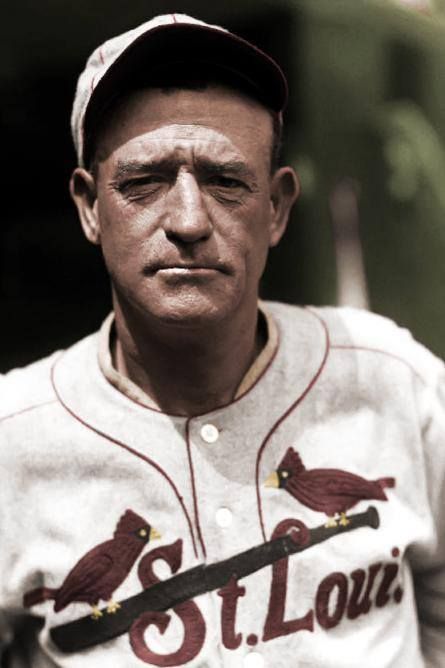
As for “Old Sarge,” he was among the first American forces sent to Europe during World War I, attached to the 138th Infantry Regiment during the Chateau Thierry, St. Mihiel and Argonne campaigns. Street and the St. Louis-based 138th Regiment fought alongside Col. George S. Patton’s tank brigade when the Americans captured Cheppy and Exermont. An enemy machinegun bullet punched a hole in Street’s leg in October, bringing an end to his soldiering and playing days.
Street was one of several baseball players assigned to the 1st Gas Regiment. In 1929, Cardinals general manager — and former 1st Regiment officer — Branch Rickey would call on Street to join the Cardinals coaching staff. When Billy Southworth (yes, the same Billy Southworth who returned as Cardinal skipper for the 1940-1945 seasons) was fired in 1930, Street got the job. Old Sarge led the Redbirds to a National League pennant in 1930 and a World Series victory in 1931.
Billy Southworth grew up in Columbus, Ohio playing with neighbor and future ace Eddie Rickenbacker. Southworth got his first major league job when the Cleveland Indians needed to replace an injured Shoeless Joe Jackson. He spent the next two seasons in the minor leagues, but got another chance when Pittsburgh’s Casey Stengel joined the Navy. Southworth was registered for the draft, but his number was never called.
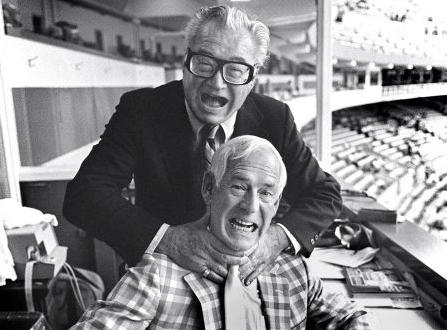
After World War II draws to a close, Street will become a color commentator for Cardinal games, teaming up with a young Harry Caray in 1945. More famous for his later days with the Chicago Cubs, Caray was a St. Louis institution for 25 years. Carey’s partners over the years included Milo Hamilton, Stretch Miller, Joe Garagiola, and Gus Mancuso. But from 1954 to Caray’s departure in 1969 he partnered with the legendary Jack Buck. During the Caray era, St. Louis ballgame broadcasts were sponsored by Griesedieck Brothers brewery before Anheuser-Busch took over in 1953.
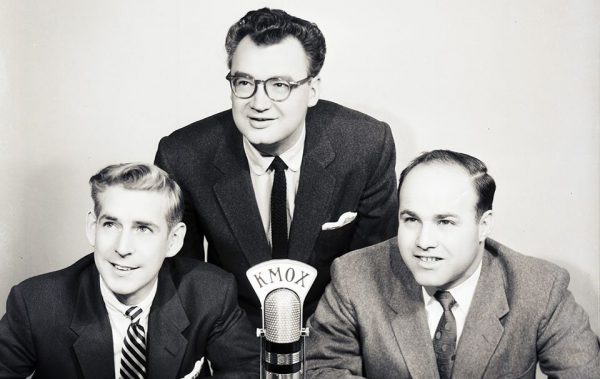
Now here’s where it gets interesting: A week after young Cpl. Jack Buck and his fellow 47th Infantry soldiers crossed the Ludendorff Bridge, the future broadcaster was leading a patrol near Remagen, Germany. The Germans fired on Buck’s patrol, hitting the future broadcaster in the arm and leg with shrapnel. The only medic Company K still had was St. Louis native Frank Borghi, who treated Buck before he was evacuated to the rear. In 1950, Borghi played goalie for the United States World Cup team that famously upset the English team 1-0.
Garagiola also served in the Army, playing baseball in the Pacific Theater. Incidentally, he was traded along with Howie Pollett on two occasions: once from the Cardinals to Pittsburgh in 1951 and from Pittsburgh to the Chicago Cubs in 1953. Caray’s poor eyesight kept him from serving.
Interestingly, Borghi grew up in Dago Hill area of St. Louis, which now just goes by “The Hill” in our more politically correct era. So did Garagiola and his childhood friend and neighbor Yogi Berra. Jack Buck lived on the same block of Elizabeth Street as Berra and Garagiola, making the 5400 block of Elizabeth Street the only stretch of pavement that can claim three Hall of Famers. There must be something in the water because Borghi was one of five Dago Hill residents on the 1950 soccer team. You can’t make this stuff up.
Evening star. (Washington, D.C.), 22 September 1941. Chronicling America: Historic American Newspapers. Lib. of Congress.
https://chroniclingamerica.loc.gov/lccn/sn83045462/1941-09-22/ed-1/
